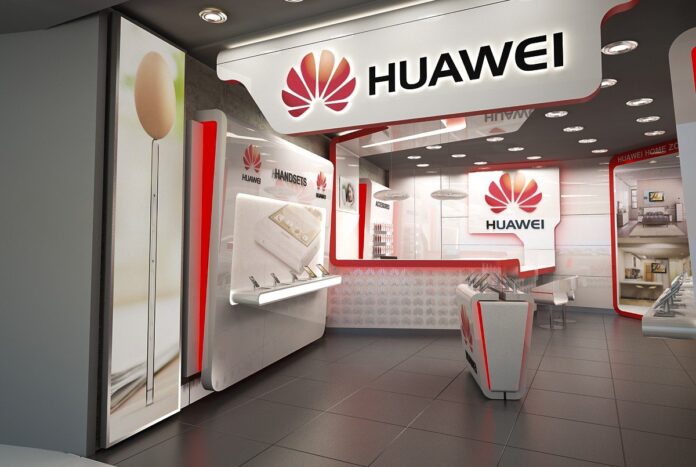JOHANNESBURG, South Africa, November 3, 2022/ — The pandemic’s first year saw an unprecedented 5.4 percent drop in carbon emissions, attributable to people being unable to travel or visit the office. But these gains are being eroded with the end of lockdowns, and a return to business as normal, with carbon emissions, predicted to bounce back to pre-COVID levels.
As more people return to the office – even in a hybrid environment – the carbon emissions of buildings and campuses have come into focus. It’s estimated that buildings generate forty percent of global carbon emissions, while building operations are responsible for 28 percent of emissions. Making buildings and campuses greener and cleaner must become a major priority if the world is going to reach net zero by 2050 – or before.
Unlike air-con, networks can’t be switched off
Most modern buildings will shut down lights and air conditioning when there’s no one in them. This demand-based HVAC use lowers carbon emissions and reduces utility bills, but the elephant in the room is network services. Unlike air-con and lighting, networks must be available all day, every day.
Keeping networks running all the time and making sure they’re stable consumes a considerable amount of electricity. An office building with 2000 users all running a traditional network will consume as much as 83,000 kW/h of electricity per year. If this power isn’t coming from renewable sources, it becomes a huge carbon emitter.
This power consumption of traditional networks will only go up unless major changes are made to the network architecture and technology. That’s because we’re heading towards an era where everything is connected.
IDC predicts that by 2025 more than 14 billion non-IoT terminals and 41 billion IoT terminals will be connected. This influx of connectivity will accelerate campus network expansion, drive up network deployment, operations, and maintenance (O&M) costs, and increase energy consumption.
Network trends and challenges
Wireless has been a boon for network users. People are no longer bound to specific desks or rooms when they want to get online, and campus connectivity can even extend outdoors. But Wi-Fi terminals need periodic upgrades and it’s unacceptable to have to replace cable every time an upgrade is required. In addition, relying on cable from the Extra Low Voltage (ELV) room to each desktop restricts network expansion because a new cable must be deployed each time a terminal is added.
Another existing network problem is bandwidth over-subscription due to three-layer networking. The result is that by the time connectivity reaches the user, the actual available bandwidth is very low and fails to meet the bandwidth-hungry needs of Wi-Fi 6 access points.
The final problem with existing campus networks concerns the influx of IoT terminals. As the network expands, operations and maintenance become complex. Inflexible architectures result in high terminal capacity expansion costs and time-consuming provisioning.
How the smart campus network achieves green
Huawei’s low carbon smart campus network overcomes the problems of traditional network architectures in several innovative ways. First, the network is simplified from three layers to two, which slashes the number of managed nodes by 80 percent.
The smart network also allows for one cable for multiple terminals – replacing the old model of one cable per terminal – which reduces the amount of network cabling by over 75 percent.
It also uses a central switch to flexibly expand ports based on rack units (RUs) and supports unified access for up to 3,000 terminals.
At the desktop level, CloudEngine 55731-L-RU (https://bit.ly/3DUdW90) series rack units can be deployed. This eliminates the cabling from the access switch in the ELV box or room to terminals; for example, a four-port RU decreases the number of cables needed from four to one, in turn lightening the cabling workload by 75 percent or up to 87.5 percent when an eight-port rack unit is used.
This solution achieves the dream of one access device for the entire building. The devices are also plug and play, configuration free, and management free, fulfilling the goal of “one network as one device.”
The low carbon smart campus network ensures network continuity without local mains supply through the support of secondary PoE. This PoE also enables connectivity lengths above 300 meters and power supply over 60W. At the same time, the hybrid cables offer high bandwidth for ultra-fast data transmission, which paves the way for smooth network evolution. This one-off cabling will support network evolution for the next 15 years.
The bottom line – cost and administrative savings
The low-carbon network uses fan-free rack units with energy-efficient chips. Each RU consumes less than 7W energy, with the average single port power consumption being less than 1W. This means the solution uses around 30 percent less energy than the industry average.
An office campus with 2000 users could therefore achieve 38 percent lower investment costs, including the procurement and deployment costs of devices, cables, and cabinets. The same network would also achieve a 30 percent cut in electricity expenditure for the entire network, saving 25,193 kW/h per year, the equivalent of reducing the use of 101,000 tonnes of standard coal or the planting of 1395 new trees.
Higher education benefits from smart campus
Case study: Hunan University
Hunan University (HNU) wanted to create an efficient, clean, and green network across its campuses and deliver an improved wireless experience for its students, staff, and faculty.
HNU’s goal was to achieve 100 percent wireless signal coverage for buildings within the construction scope using the latest Wi-Fi 6 technology. It wanted low roaming latency (less than 30 ms) as well as low average packet loss and 100 Mbit/s network speed for single users. Hitting that speed goal would mean users can download large files, as well as use video conferencing and productivity tools.
The solution was to use hybrid cables and Wi-Fi 6 to achieve its environmental and connectivity requirements. It simplified its traditional three-layer network architecture and implemented Huawei-exclusive optical-electrical PoE technology. This tech allows 10Gbit/s broadband access and 300 m long-distance PoE power supply through a single hybrid cable.
The need for local mains supply was also eliminated, while Wi-Fi 6 meets all HNU’s indoor and outdoor coverage needs. Finally, the network’s energy consumption was lowered by around 30 percent due to the innovative, efficient fan-free rack unit design.
“With Huawei’s intelligent cloud network solution, Hunan University builds a low-carbon, intelligent, high-quality, and wireless campus network,” says Professor Chen Guo, Director of Information Technology and Facilities at Human University, “this is not only an integral part of our ‘Smart HNU’ initiative, but also enhances digital infrastructure that makes HNU a ‘Double First-Class University’ (https://bit.ly/3FGuoed), providing students and faculty with powerful IT support.”
This solution has enhanced production, teaching, and learning, ushering in a new chapter of exploration for the construction and application of all-optical networks in a green era and delivering new value together with partners like Hunan University.
To learn more about Huawei’s Low-carbon Smart Campus Network Solution, please click here (https://bit.ly/3fCDrCh).
HUAWEI CONNECT is a key event on the global ICT calendar where Huawei will announce the newest products and solutions, discuss best practices, and explore paths to shared success. Click here (https://bit.ly/3UlgNgt) to find out more about the event.












































